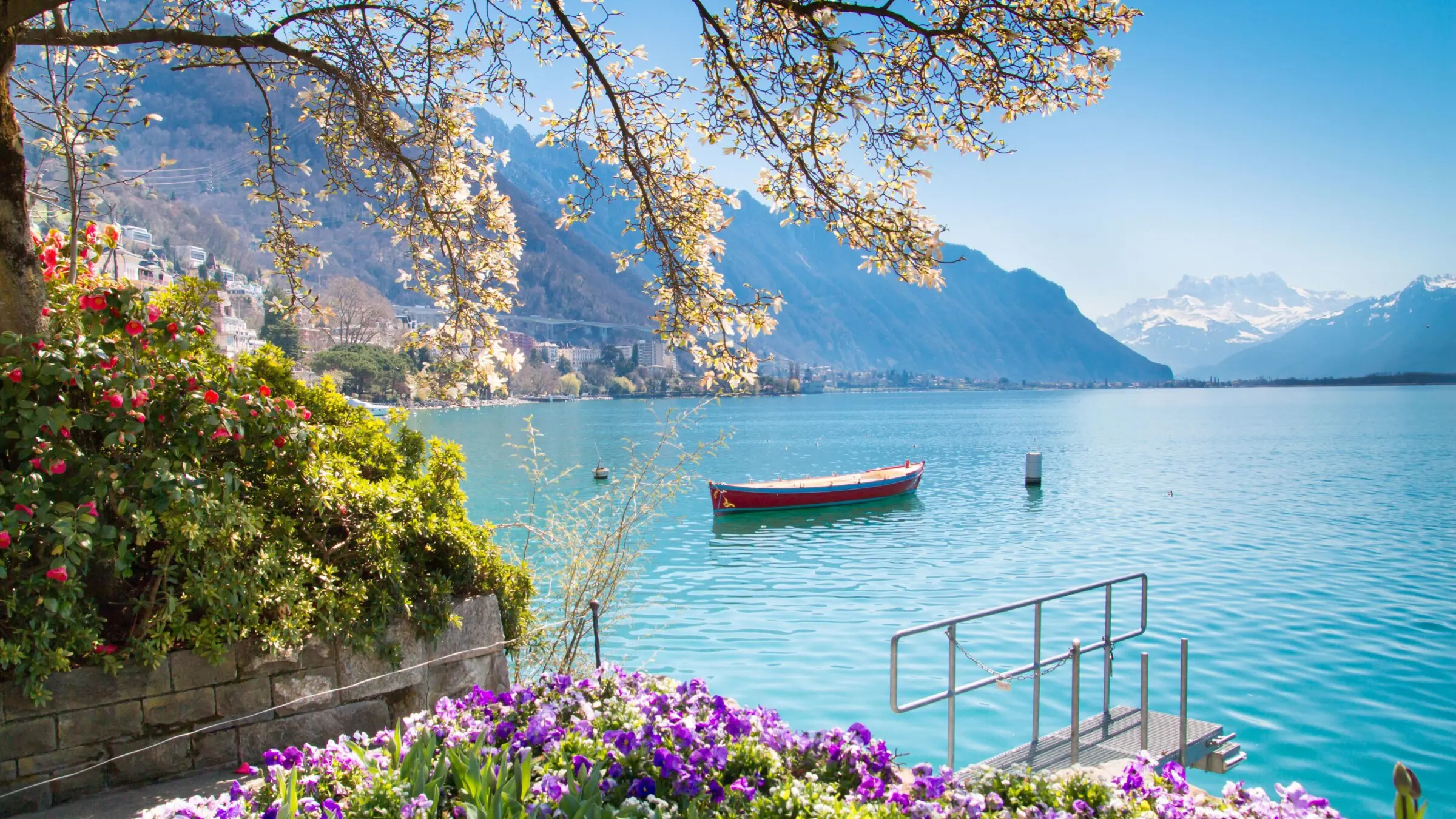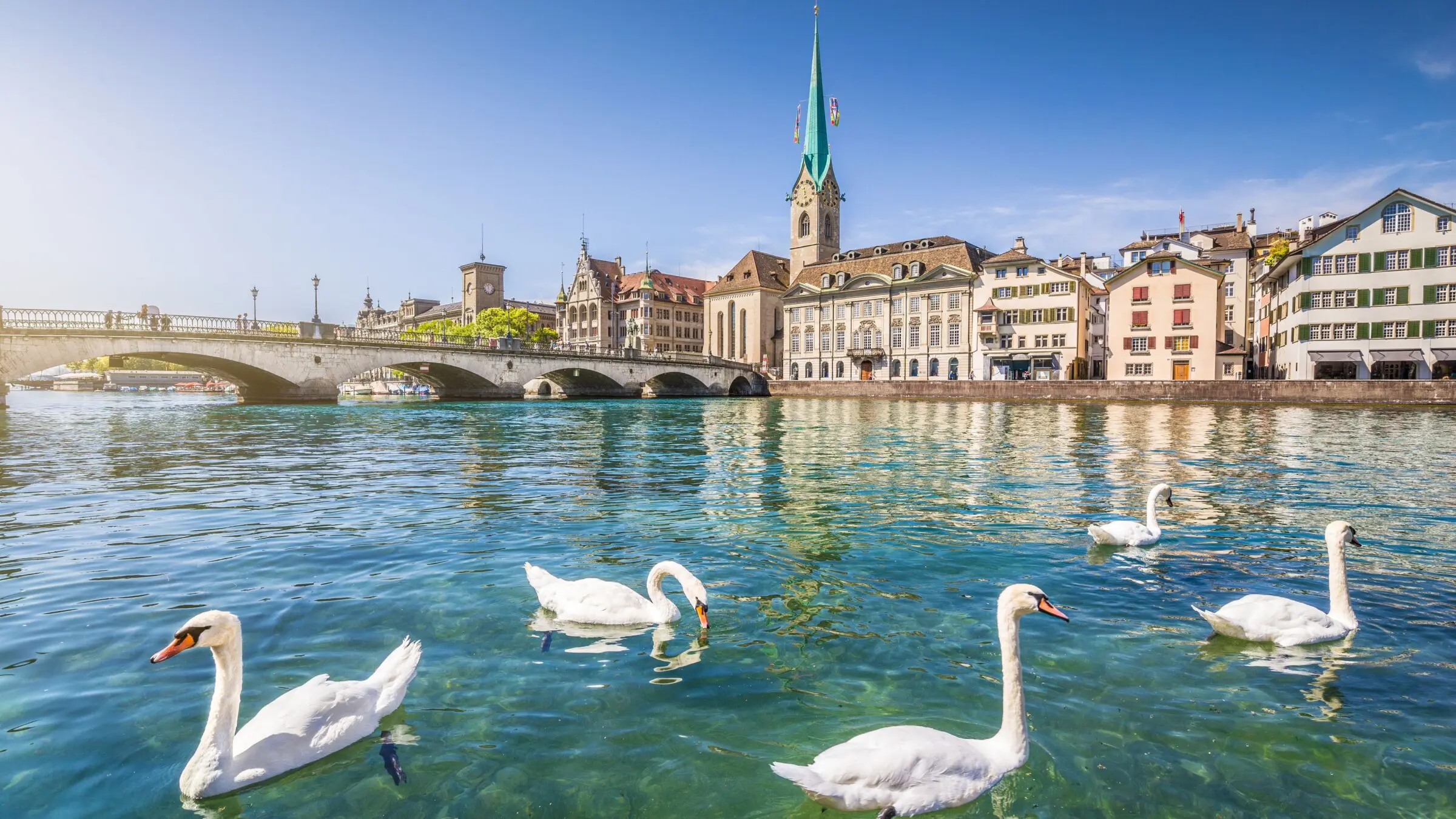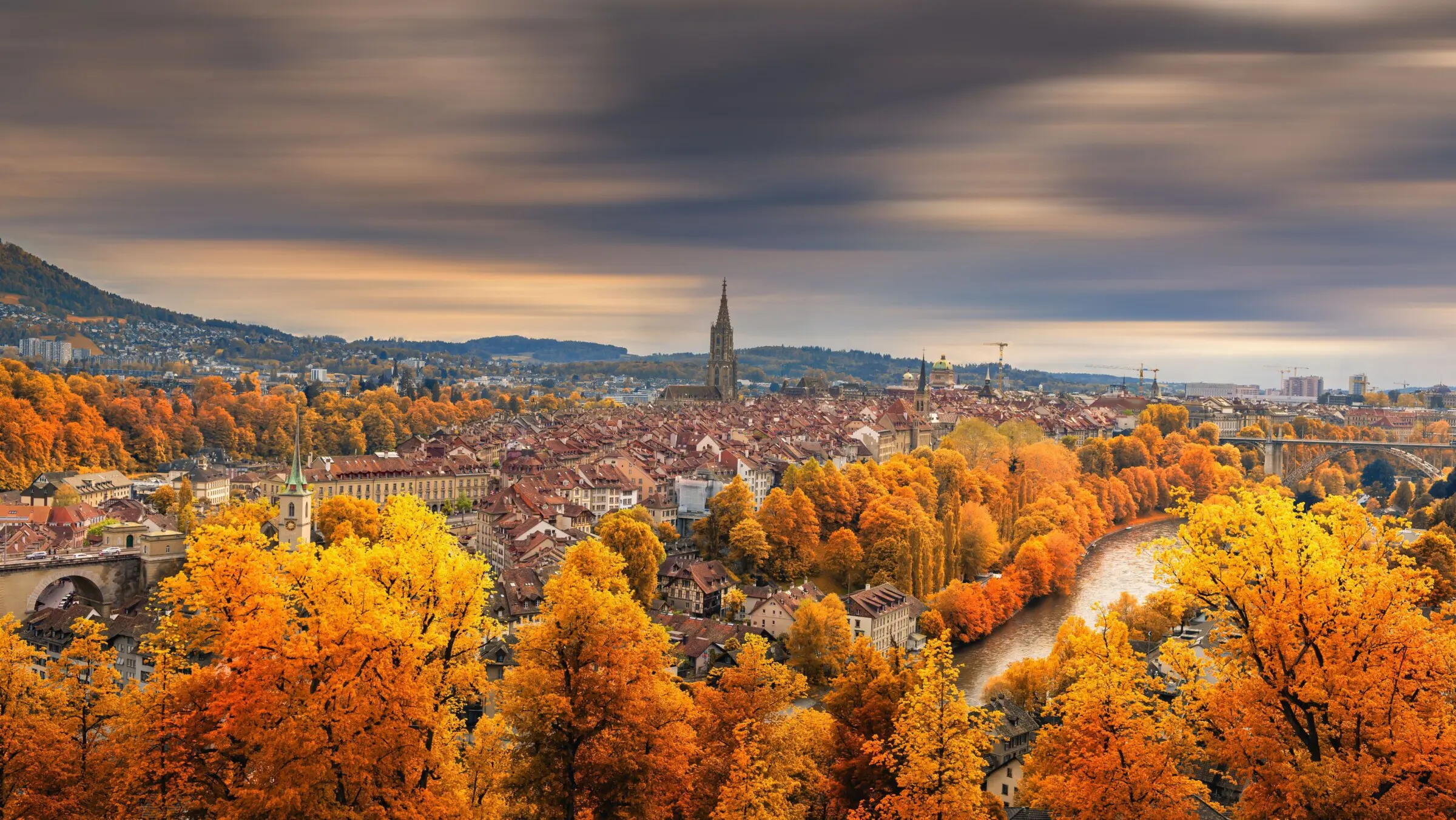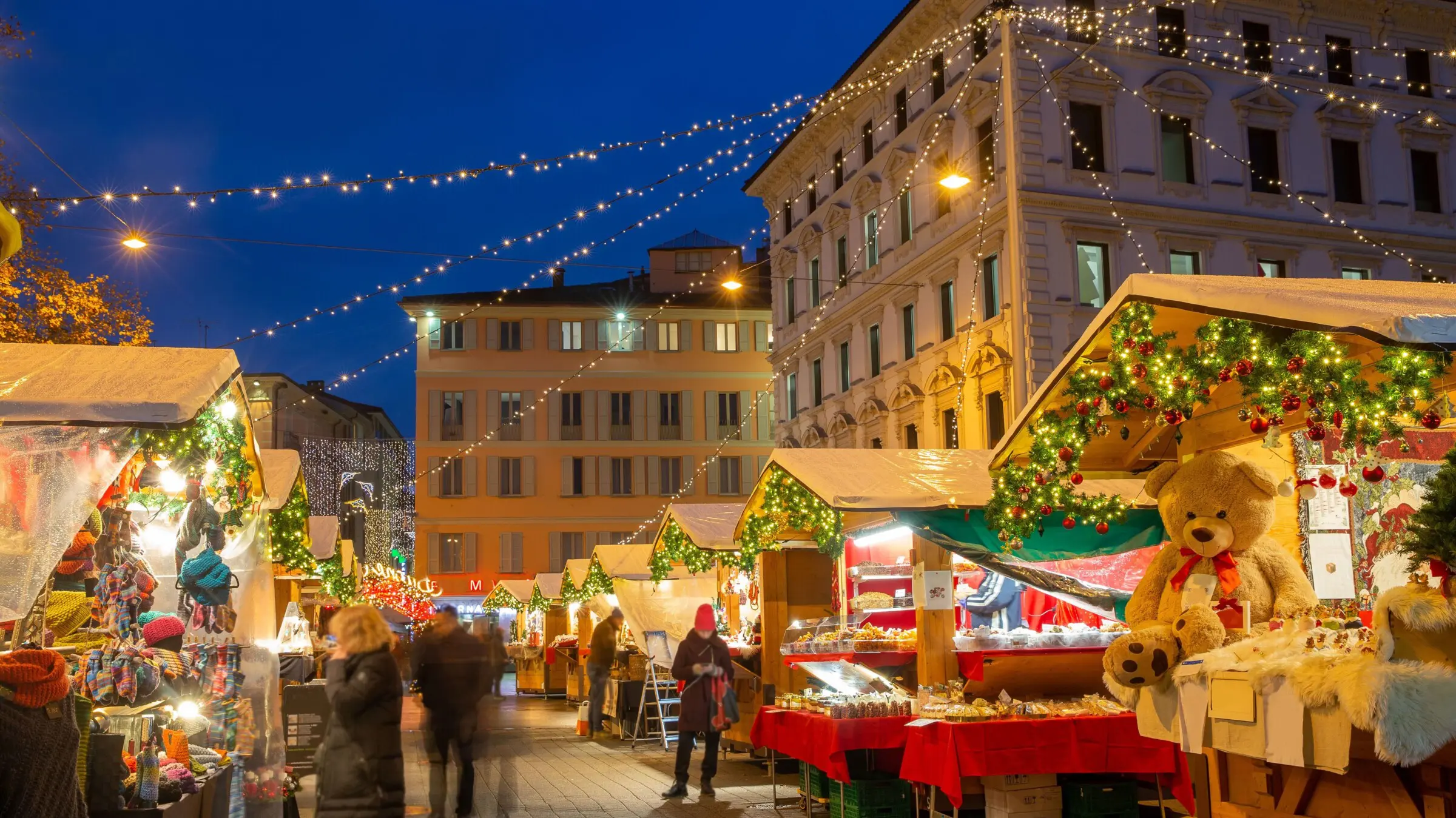When is the best time to visit Switzerland, summer, spring, fall, or winter? The truth is that this beautiful country in Central Europe could be visited in any season and on any day of the year.
Switzerland is one of those rare destinations famed equally for its cosmopolitan cities and natural beauty spots. As most cities boast a lakeside setting encased by mountains, the boundaries are somewhat blurred between urban and rural.
When deciding on the best time to visit Switzerland, don’t forget that the climate of Switzerland is neither excessively hot nor excessively cold.
However, as the weather does dictate how you’ll spend your time, and since weather conditions vary considerably, it’s important to get acquainted with the differing patterns for each season and location.
This guide to the seasons of Switzerland addresses everything you need to know and proposes where to go in each season.
Jump to a section of this article
An Overview of Switzerland’s Climate & Weather
Although Switzerland’s climate is categorized as temperate, the forecasts vary from region to region because of the country’s mountainous terrain.
Winter months are incredibly snowy in alpine zones, hence Switzerland’s reputation as a ski destination. Although snow doesn’t tend to settle in cities, it can often be spotted on the surrounding peaks.
Swiss summers are hot enough to go jacket-free and take a dip in the countless lakes, but nowhere near as scorching as in some popular destinations in the Mediterranean. Most of the heat – and the occasional thunderstorm – is contained in cities while rural regions retain the crispness of mountain air.
As is typical of Central Europe, the shoulder seasons bring pleasant weather. However, patterns aren’t always predictable, and these months are rain-prone. When weighing up whether to visit Switzerland in spring or the fall, it’s important to choose the month with care.

Best Time To Visit Switzerland: A Season-By-Season Guide
Why Visit Switzerland in Spring (March to May)
Spring, particularly later in the season, is one of the most rewarding times to visit Switzerland. The thawing of snow in the countryside coincides with the bloom of colorful wildflowers, while lush green valleys gradually reopen for outdoor pursuits.
This season of renewal and fresh beginnings sees minimal crowds and, depending on the exact month of travel, a pick-and-mix of both winter and spring activities.
Spring Weather & Climate in Switzerland
Spring is known for its unpredictability. Temperatures gradually become milder as the season advances and days become longer and sunnier.
March retains a wintery feel in the highlands as snow lingers in the lower valleys. Temperatures in the cities hover in the early 40s and gradually rise as April looms near.
Speaking of April, this is the most diverse month for Switzerland’s weather. You can anticipate a mix of rain, wind, sunshine, and perhaps even some snowfall.
Despite an increase in rain, May sees the weather inch towards stability. Daytime temperatures often surpass 60°F in cities, which is perfect for exploring local parks and taking day trips. The mountains remain snowy at higher elevations as the lowlands brush off the final signs of winter.
Advantages of Visiting Switzerland in Spring
For starters, there are fewer crowds during the spring shoulder season, which makes for a relaxing sightseeing experience. The duality of Switzerland in spring is attractive. You may be able to ski in the Alps in the morning and idle through blooming valleys in the afternoon.
As the snow melts, spectacular waterfalls are formed. When rain clouds loom, there are plenty of indoor activities, including museums or wine tastings. Not to mention, a rainy day is the perfect excuse for retail therapy in Swiss boutiques.
Best Places To Visit in Switzerland in Spring
Mid to late spring is the best time of year to visit Switzerland overall. Plan an early-season getaway to Lucerne, where you can idle around the frescoed buildings of the Altstadt and take a boat ride on Lake Lucerne, considered by many the prettiest lake in the country.
The views from Mount Pilatus stun in all four seasons, while Mount Rigi has you covered for an early spring hike.
Interlaken (which translates into Between Lakes) and the Lauterbrunnen Valley are some of the best places to visit in Switzerland in spring. Nourished by the annual snow melt, this waterfall-studded valley is at its most dramatic at this time of year.
For those seeking urban culture, head to Bern. The Swiss capital is especially charming in spring as the mild weather paves the way for riverside walks and al fresco coffee. Bern’s central location provides potential for day trips and easy onward connections.
The Ticino region tends to shrug off its winter coats earlier than the rest of the country. Palm trees and T-shirt weather make Lugano, the capital of this Italian-speaking province, a contender for those craving a Mediterranean vibe.
Visit in late March for the renowned Camellia Festival, which charms flora enthusiasts every year. For those seeking late-season skiing, Zermatt’s pistes remain open until May. Even without hitting the slopes, seeing the Matterhorn against a bluebird sky is an experience that’s hard to beat.

Why Visit Switzerland in Summer (June to August)
Summers in Switzerland are nothing short of glorious. Τhis is the best time to visit Switzerland for alpine experiences. The weather is delightful for the most part, and the extended hours of sunlight are ideal for exploring the Great Outdoors.
Meanwhile, cities come alive with pop-up happenings, open-air music festivals, and other cultural events.
Summer Weather & Climate in Switzerland
With daytime average temperatures ranging from the mid-60s to the mid-80s, the summer season in Switzerland is warm yet not unbearable. Higher altitudes are embraced by refreshing breezes, whereas lower-lying cities trap heat. Fortunately, most are regulated by lakes and rivers.
Central Switzerland sees a fair bit of precipitation during summer, but rain tends to fall hard and heavy and then clear up. Besides the lovely weather, the longer days of summer also mean there is more time to explore. This means you needn’t rush hikes, and it’s also a great time for day trips.
Advantages of Visiting Switzerland in Summer
The main advantage of visiting Switzerland during summer is the sheer variety of activities available. You can choose from paddleboarding on urban lakes, hiking through mountain trails or valleys stripped of their winter snow, and riding cable cars into the mountains.
Services such as the Glacier Express and Bernina Express operate at full capacity in the summer months. Summer sees Switzerland come to life with festivals and events ranging from classical music concerts in large cities to folk celebrations in rural alpine towns. To top it all off, the weather is reliable on the whole.
Best Places To Visit in Switzerland in Summer
Rural areas are the best places to travel during summer in Switzerland. The warm weather is ideal for hiking in places like the Bernese Oberland and the Engadin Valley, the latter of which is far quieter outside of the ski season.
Head to Grindelwald for iconic routes like the First Cliff Walk and the Eiger Trail. Geneva is one of the best cities for a summer vacation, with boat trips and swimming at the lakeside beach resort on the table.
Zurich has a comparable attraction in summer with top activities including visiting the summit of Uetliberg Mountain and cruising the Limmat River and Lake Zurich.

Why Visit Switzerland in The Fall (September to November)
Visiting Switzerland in the fall is like stepping into a painting. The forests turn golden, vineyards are painted in amber and crimson hues, and riversides are kissed with soft autumnal light. There’s a briskness to the air that signals a peaceful shift into the quieter half of the year.
Fall is a perfect time to visit Switzerland for a calm vacation. The summer crowds fade away and the first two months remain rich in outdoor opportunities. As the season of grape harvest and food festivals, fall is the best time to visit Switzerland for viticulture and culinary experiences.
Fall Weather & Climate in Switzerland
September clings to its summer temperatures with daytime highs still sitting comfortably in the 60s. As the season progresses, the temperatures cool into the 50s, and there is a noticeable shift between morning, afternoon, and evening.
By November, the atmosphere feels closer to winter, but surprise heatwaves can strike, and the sun continues to shine brightly behind the chill. Snow thickens in the higher mountain areas and marks the opening of the annual ski season. Bear in mind that October is one of Switzerland’s rainiest months.
Advantages of Visiting Switzerland in The Fall
Much as with spring, the main reason to visit Switzerland in September, October, and November is to avoid the crowds. As the weather remains mild, you can still factor in such outdoor pursuits as hiking, biking, and rafting. This is also an excellent time to partake in wine harvest tourism and see vineyards sporting autumn hues.
Best Places To Visit in Switzerland in The Fall
Much like late spring, most places in Switzerland may be visited in the fall. The weather in September and October lends itself to a combination of indoor and outdoor activities as well as prime photography opportunities.
Consider devising a route that combines Swiss cities and villages with excursions to mountains and vineyards. The terraced vineyards of Lavaux, a designated UNESCO World Heritage Site, are at their finest in October and may be visited from Geneva.
Served by the Lavaux Express train, this wine region is revered for its Chasselas grapes and white wines. The Upper Engadin Valley (Oberengadin) is a fine choice for those seeking fall foliage against snow-capped peaks.
For cultural charm, head to Bern or Fribourg to enjoy meandering through cobbled streets and getting acquainted with medieval architecture and cozy eats at local restaurants.

Why Visit Switzerland in Winter (December to February)
If you want to experience a snowglobe-esque landscape of cozy villages and twinkling Christmas markets, the winter season might be the best time to visit Switzerland. December is the season for donning a bobble hat and clutching a hot glass of wine while admiring storefronts and purchasing artisanal crafts.
Between December and February, Switzerland’s mountains are a paradise for snow lovers seeking an exhilarating experience on the slopes and a glamorous apres-ski scene. If neither skiing nor shopping is on your agenda, perhaps a thermal spa retreat or a fireside glass of wine in a log cabin will catch your fancy.
Winter Weather & Climate in Switzerland
There’s snow galore in the mountain regions during the Swiss winter, where temperatures can fall as low as 23°F, while 41°F is about as high as it gets.
Down in lower elevations, the conditions are chilly, crisp, and dry. Snow can make an occasional appearance, but it rarely sticks for longer than a few days. January is the coldest month. It’s also the best time to go to Switzerland for skiing, snowboarding, and winter hiking.
Advantages of Visiting Switzerland in Winter
Winter is the best time to visit Switzerland for skiing. The Swiss Alps offer some of the finest skiing and snowboarding in the world, with impeccable infrastructure and slopes for all abilities.
Those seeking gentler thrills can experience cross-country skiing, snowshoeing, tobogganing, winter hiking, and scenic train rides through frosty landscapes.
Cities and towns are illuminated with Christmas cheer from early December. Festive markets are the perfect place to try seasonal savories and raclette over spiced wine and hot chocolate.
Away from the slopes, January and February are the best months to visit Switzerland for quiet. You’ll not need to wait in line for too long at museums and galleries. These chilly months are also ideal for spa escapes in thermal resorts like Leukerbad or Bad Ragaz.
Best Places To Visit in Switzerland in Winter
Where to travel in Switzerland in winter depends largely on your motivation. For winter sports enthusiasts, Zermatt and St. Moritz fly to the top of the list for a luxurious experience in iconic ski resorts. Consider that the slopes of Engelberg and Davos are just as worthy and carry more of a local vibe.
For a winter wonderland experience with no need for salopettes, head to the Jungfrau region. Also known as the Top of Europe, this high-mountain area will amaze you with snow-covered villages, such as Grindelwald (from where the Eiger Express cable car departs for the Eiger Glacier) and Wengen.
Another option for winter in Switzerland is to string together a Christmas market route. These German-inspired markets are present in all cities and towns from east to west.

Explore Switzerland All Year Round With JayWay
Once you decide on the best time to visit Switzerland for you, it’s time to start planning your adventure in this stunning country in Central Europe. But you’re not alone in this. Our expert trip planners will ensure a seamless travel experience, and your Switzerland itinerary will be one of the most memorable trips you’ve ever had.

Born and raised in Athens, Maria’s passionate about travel and storytelling, a combination that makes her ideal for her role as our content manager.